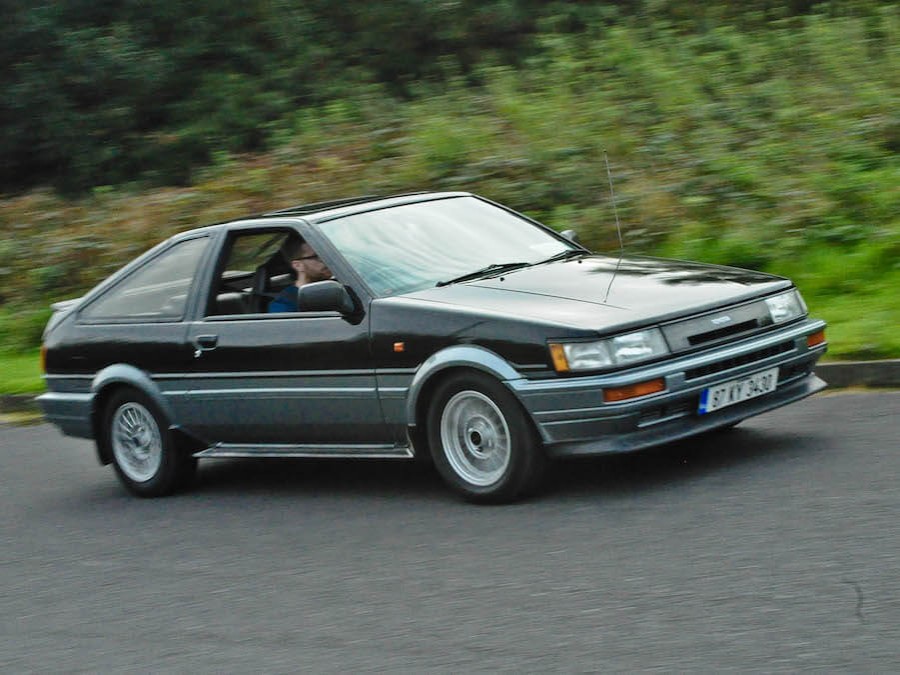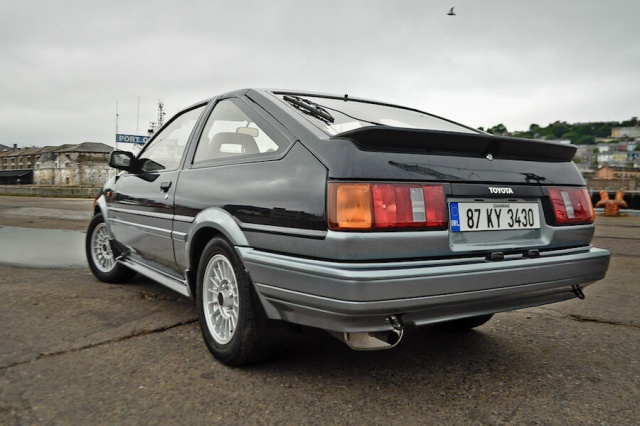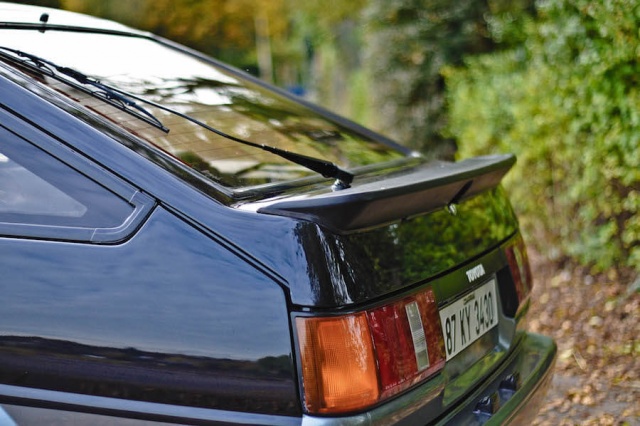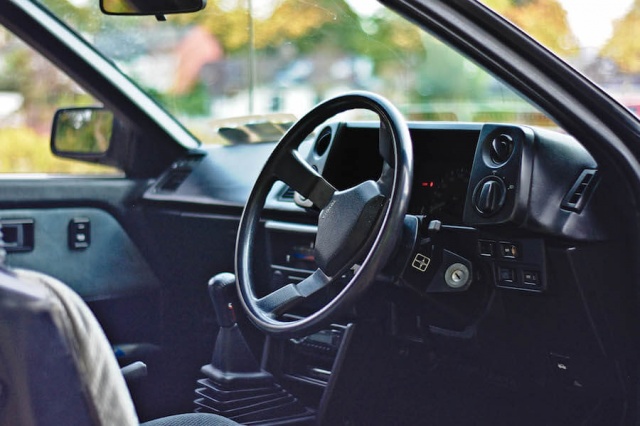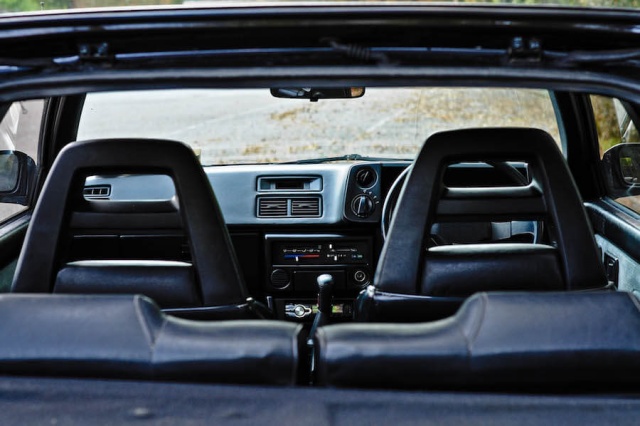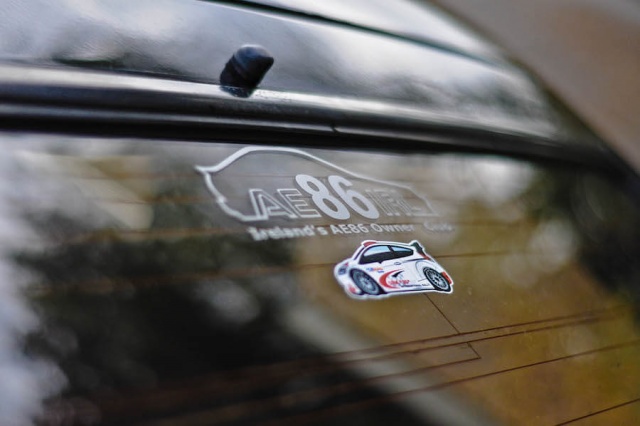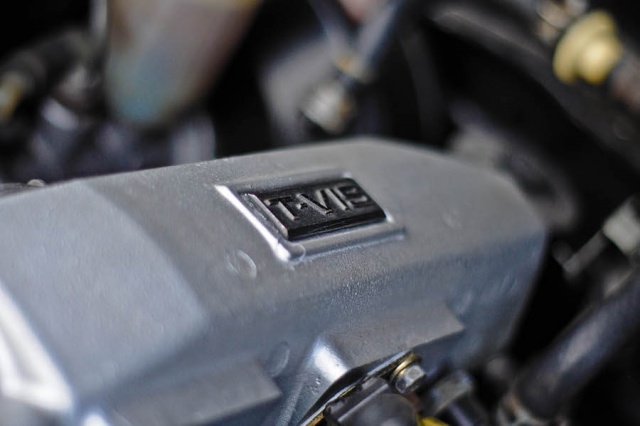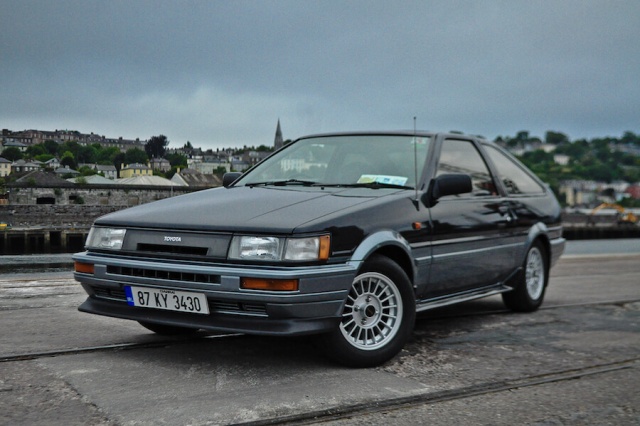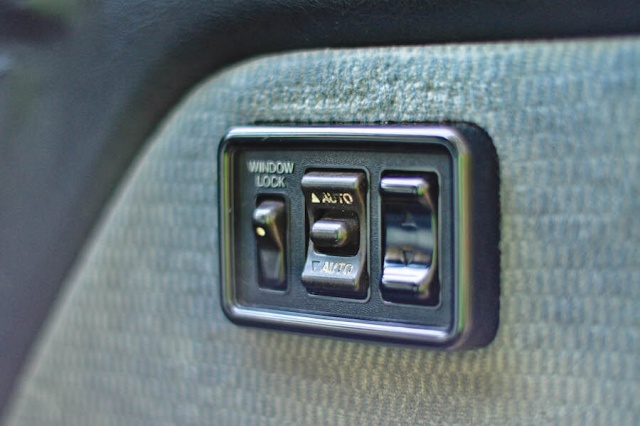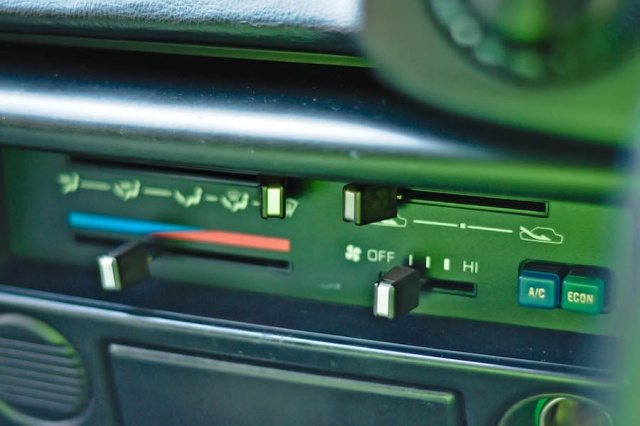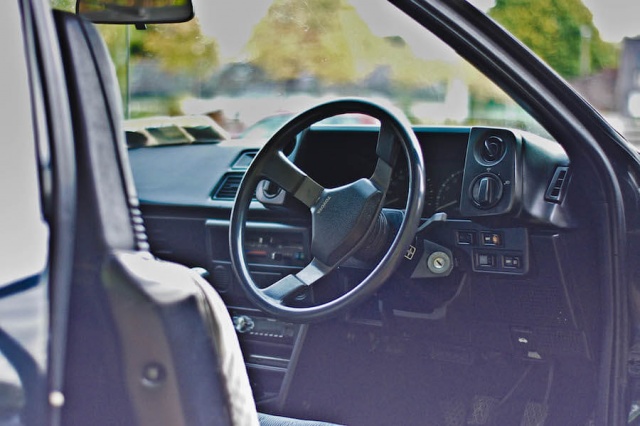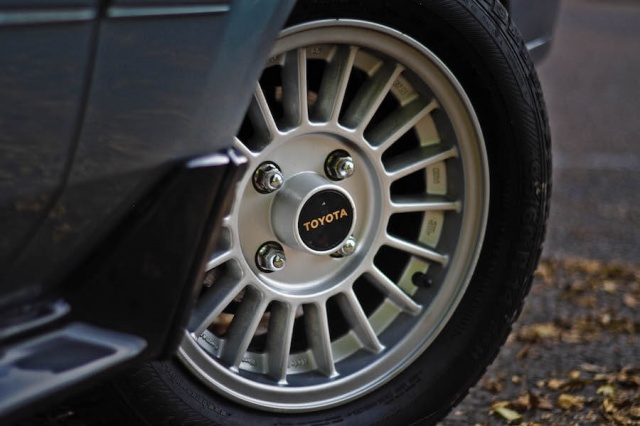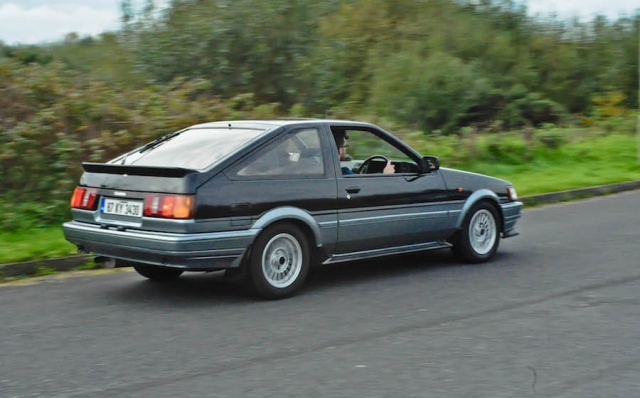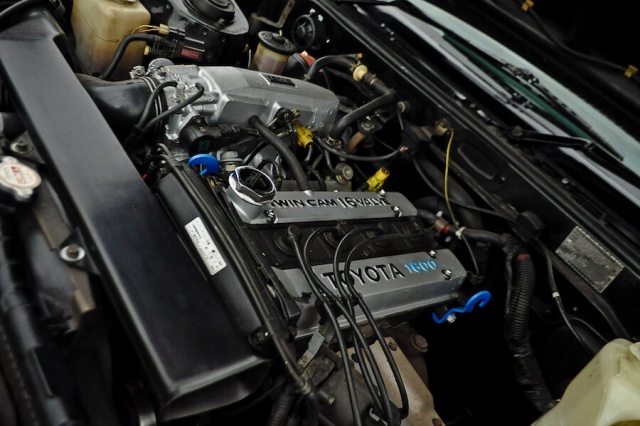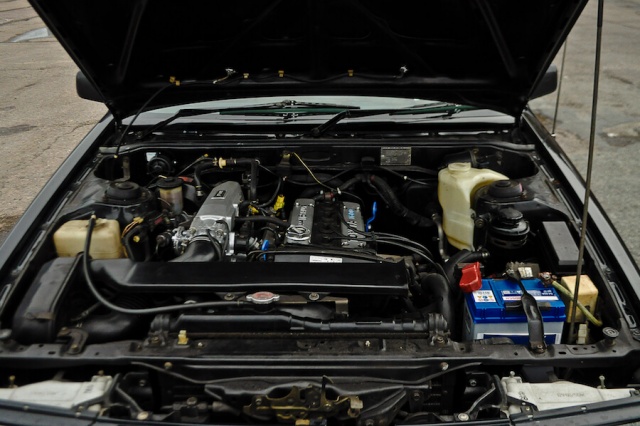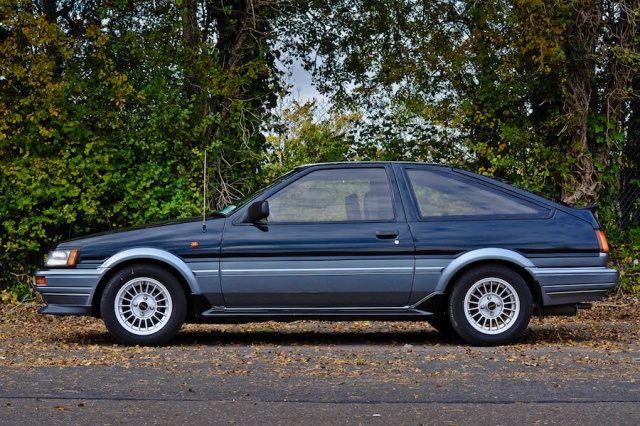I’m going to say it straight out: I don’t get the whole AE86 thing. At the risk of being castigated by a large percentage of the Irish car enthusiast community, I find it difficult to get excited about a 1980’s Toyota Corolla. There seems to be two distinct camps on this island, both fiercely protective of their own interpretations of what makes the Twin Cam great: on one side you’ve got the ‘’UK-spec’’ devotees with their Janspeed pipes and numberplate fetishes. On the other are the JDM boys, inspired by Takumi Fujiwara and his tofu-delivering shenanigans up and down Mount Akina in a ‘’panda’’ Trueno. Baffled already? It’s OK, just read on…
In the mid-1980s, affordable rear-wheel drive performance cars were swiftly going the way of the dodo. Front-driven hot hatches like Peugeot’s 205 GTI and the Volkswagen Golf GTI ruled the roost, and even Ford’s Escort XR3 was saddled with ‘’wrong-wheel drive’’. Only one manufacturer fought the rising tide: Toyota. As incredulous as that may sound considering the company’s reputation for dependable, unbreakable workhorses (try killing a 1990’s Corolla XLi), there was method to their madness.
Appearing in 1983 with a layout seemingly inspired by Ford’s Mk2 Escort, the AE86 Corolla GT blended a modern twin-cam 16v naturally-aspirated engine with a decidedly archaic chassis design, live axle and all. That engine was the now-famous 4A-GE, which featured a head designed in conjunction with Yamaha, a variable-length intake system and around 125hp from its 1.6-litre capacity. The Corolla wasn’t going to break any land speed records, but then again it didn’t need to. A five-speed manual gearbox with optional limited-slip differential and a rev counter that didn’t go red until near 8,000 rpm hinted that the designers intended this to be a driver’s machine.
You’d have never guessed that from the outside though, and the two-tone paint and angular shape were representative of most Japanese cars of the time. The only model offered officially in Europe was the Corolla GT with its fixed headlights in coupe (known as the ‘’Booter’’ model thanks to its, er, boot) and hatchback form, but in its home market there were countless combinations of Trueno (pop-up lamps), Levin (fixed headlight), GT, GT-APEX, GTV, ‘’zenki’’ (early) and ‘’kouki’’ (late) models, Black Limited, the list goes on and on and on. I’m not even going to try to get into the paint variations and options list subtleties because many, many people on this island have encyclopaedic knowledge of every nut and bolt of these cars, and will no doubt find it frustrating to read my lame attempts at deciphering the code.
Like the Escort, the Twin Cam (as it was rapidly christened) found favour in motorsport thanks to its simple underpinnings and forgiving chassis balance. A huge amount were rallied over here, and if you enjoy watching the two-door coupe models being rolled into trees and fields then type ‘’F Cup’’ (Finland’s premier rallying/destruction derby series) into YouTube. It even won the manufacturer’s section of the European Touring Car Championship in 1986 against the big Volvos and BMWs, but to pen an AE86 article without acknowledging its contribution to the drifting scene is borderline ignorant.
Scan back up to the first paragraph and you’ll find a reference to Takumi Fujiwara. Takumi is actually a fictional character in the seminal Japanese ‘’Initial D’’ manga series, which focuses on his exploits while delivering tofu in a white and black (hence ‘’panda’’) AE86 Trueno. Countless young Japanese men and women have emulated these feats on their local mountain roads since, and the AE86 played a big part in the formalisation of drifting into a recognised sport. Drifting has spread worldwide since the advent of the internet allowed everyone to watch the likes of Katsuhiro Ueo bounce his ‘’hachi-roku’’ from wall to wall in his attempts to beat the more powerful Nissans, and it’s the tuning techniques and bodystyles made popular by drifting that define the JDM Truenos and Levins found over here. People will trawl the web to find that rare set of Work wheels or TRD part to complete their own particular build, and no two JDM-spec AE86s are quite the same.
By contrast the ‘’UK-spec’’ cars follow a strict theme. Janspeed exhaust, Superlite or Revolution wheels, Cibie spotlights on the front and more often than not, a big wavy CB radio aerial that wouldn’t look out of place on the side of a hill. These cars take inspiration from the rally theme, and can often be found leaving rubber on a crossroads near you… For UK-spec fans, history and originality are the most important elements, and cars and parts change hands for big money.
So, hopefully you’re now slightly more up to speed with the many facets that contribute to the AE86 cult. As usual, the best way to understand a car’s appeal is to go and drive one. I’ve driven a drift-prepared JDM ‘’booter’’ before, but all I recall from that spin was trying to squeeze my arse into the ludicrously narrow aftermarket Bride bucket seat and banging my knee off the rollcage every time I turned left. And the noise. And the rattling. For this feature we wanted to find an example that was as unmodified and true to factory-spec as possible, and Eoin’s 1987 car fitted the bill perfectly.
Fresh from the NCT centre that very morning where even the tester was impressed with the car’s condition, it’s great to see a GT on standard wheels and at its original ride height. A peek underneath the rear bumper reveals a standard exhaust, and the 4A-GE idles with all the drama and fuss of a well-maintained sewing machine. As seems to be the usual case with these features, it takes a few moments to adjust to the pre-NCAP size of everything both inside and out, and a new Mondeo nearby looks like it’s already ate a couple of AE86s for breakfast. The seating position is nice and low, and the pedals are a surprisingly nice fit for my clown-like feet. It’s an object lesson in 1980’s Japanese interior design around you though, with velour and rock-hard plastic in abundance.
One of Eoin’s few mods is an uprated clutch, but pulling away is a doddle. The steering is unusually light and not particularly feelsome at low speed, but the gearchange is reassuringly mechanical and positive. Controls fall within easy reach (Toyota was always good at the ergonomic stuff), and the throttle pedal is nicely weighted and allows you to exploit the little 1600cc engine’s inherent response. A few exploratory dabs of the brake pedal reveal period-spec deceleration capabilities, but in a car that weighs under a tonne it’s not a big deal. ‘’Best Motoring’’ video fans will be glad to know that heel-and-toeing can be achieved with the same vigour that Keiichi Tsuchiya manages, and letting the 4A-GE rev out reveals an interesting surge at around 4,500rpm as the T-VIS system adjusts the airflow and gives the big intake ports plenty of food. It won’t blow your mind speed-wise, but that’s not the point of the car.
Arriving at a handily-placed roundabout, you find out what the point really is. At even low to moderate speeds, you can sense the rear loading up progressively until the narrow tyres decide that they’ve had quite enough of facilitating forward motion and would prefer to cease gripping for the time being. It’s ridiculously easy to slide this car. My dog could probably do it. It feels as natural as breathing, so as the speed increases you only use the steering and brakes to guide the car in the approximate direction that you want the slide to go. The great thing is, this is all happening at speeds well below the national limit and in a fashion that permits you to have quite a lot of fun in a safe manner. It’s hard not to draw comparison with the Mk2 Escort, but from personal experience Escort road cars aren’t quite as fun as this…
Even when you’re not sliding around and just pottering through town, the little GT attracts so much attention that you just have to learn to enjoy it. Ireland loves Toyotas, and loves Twin Cams even more. Every petrolhead has either owned one or has some story involving one, and the stares, smiles and thumbs-up from most people we meet on the road are the proof of the pudding. Personally, I’m still not going to rush out and buy one, but I can now understand why so many people are infatuated with a thirty-year old Toyota Corolla.
Many thanks to Eoin for the car, and Cian Donnellan for the photos.

